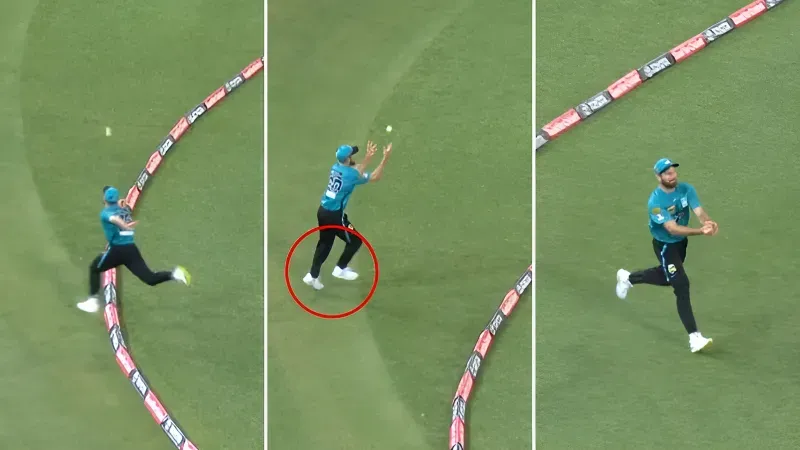If you have been following the new millennium T20 game, you might have gasped when you saw a fielder leap off the field across the boundary line to pull off a miraculous grab that left the batter in shock and confusion! It is entertaining as hell! However, it has also initiated the debates surrounding whether these miraculous “bunny hop” grabs should count. The ICC wants everyone to know it is leaning toward listening to the naysayers and taking airborne shenanigans out of the game! Let’s break it down.
Goodbye, Gravity-Defying Circus Acts?
Cricket has definitely changed, and the physical attributes of players have too. It was fun to watch players like fielders fly over the boundary to catch a ball like a flying superhero; however, the ICC has decided that this has gone a bit too far. You will have surely seen the famous Michael Neser catch where he tapped the ball up in the air from within the boundary, then ran outside the boundary, then performed a bunny hop whilst tapping the ball up in the air again, then leapt back inside the boundary to catch it. Is this legal? Yes, following the current laws. Is it fair? This was where fans, players, and laws started to go apart.
The ICC’s change of playing rules, expected to be ratified by the MCC in 2026, means more “clamping down” on these multi-jump catches. According to the new Law 19.5.2, a fielder who has left the field by stepping or jumping and touches the ball will be restricted to one attempt. If the player has taken a second touch of the ball thereafter, then they must be completely back on the playing field, and there will be no more step-jump-parry-dive circus performances.
One Jump, One Chance—The New Mantra
The essence of the new rules is this: once you have made contact with the ball, while airborne out of bounds, you must land and stay within the playing area. Straightforward? Not quite- but it does provide clarity.
In the past of cricket law, the first jump must take place from inside the field of play, but after a fielder’s first jump they could make contact with the ball any number of times from the air, they could even do it if they had jumped from outside the field of play. There were plenty of occurrences, legally, in cricket, to help redefine the spirit of the game, especially at World Cups, that would look to be used as a means of cheating rather than perverting the spirit of the game, and displayed idiotic athleticism.
Read More: Pat Cummins’ 5 Records That Prove He’s More Than Just a Captain
Why This Matters for the Game?
These changes aren’t simply housekeeping to the rules; they’re affecting match results, too! In a close match, a brilliant catch at the boundary can shift momentum either way. But what if players and/or fans believe the catch had more to do with luck than skill? It can take the shine off. By standardizing the law, the ICC is trying to preserve both the aesthetic and integrity of the sport.
Another important aspect? This change will also help streamline things for the average fan. Let’s face it—watching a fielder tap the ball in the air three times while floating in and out of the field is awesome, but it’s also really confusing. This new law will make things easier to interpret and will lessen the gray area. You either stayed in the ropes or you did not.
So, what do you think – has the ICC clipped the wings of the superheroes of cricket, or has it restored the balance to the game? We want to hear your opinions and thoughts about the new rules!
To catch up on the most current news on all of your favorite thrilling cricket updates, visit Six6slive to access our comprehensive Latest News, insightful analysis, and updates. Connect with the action now to make sure you never miss out!
